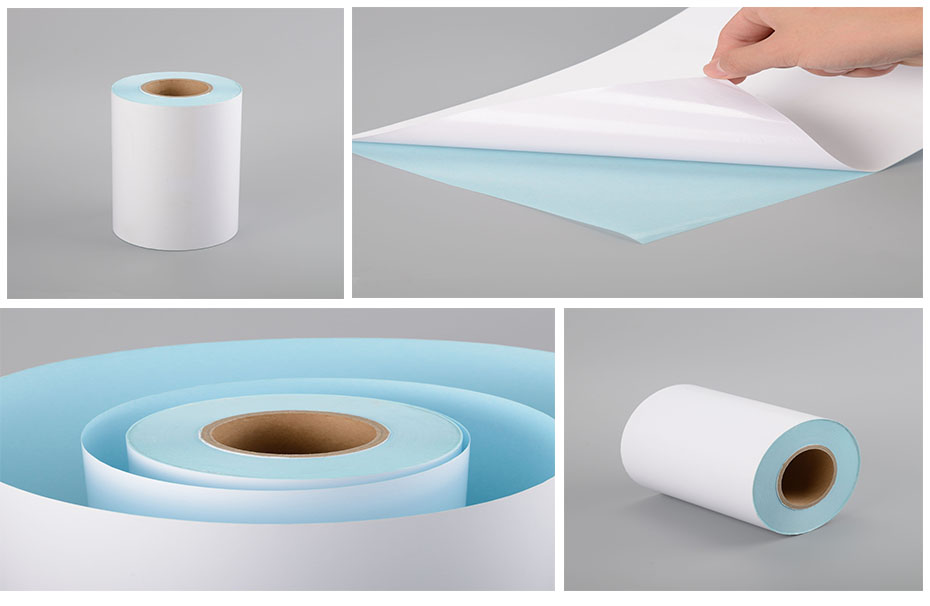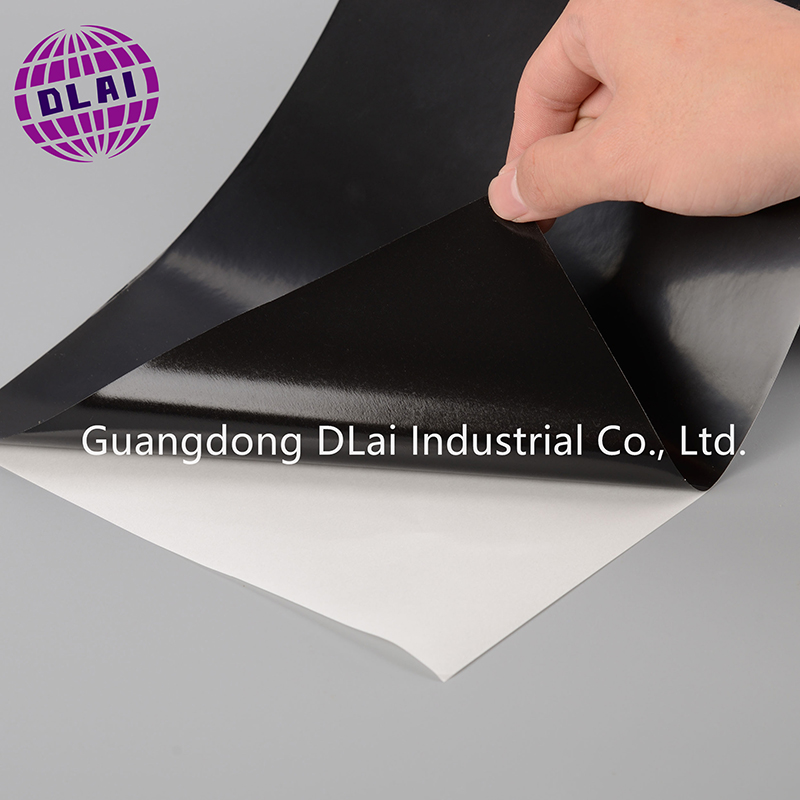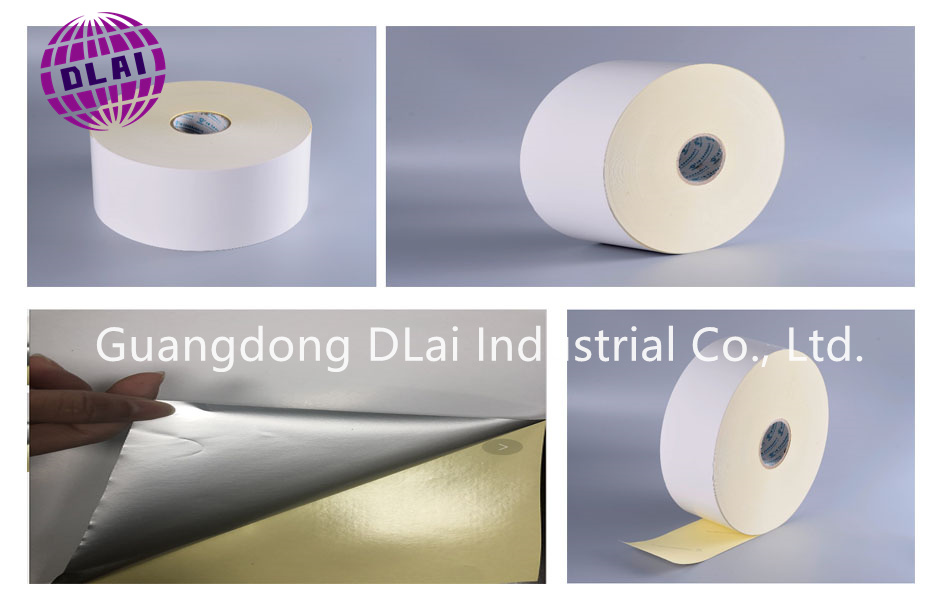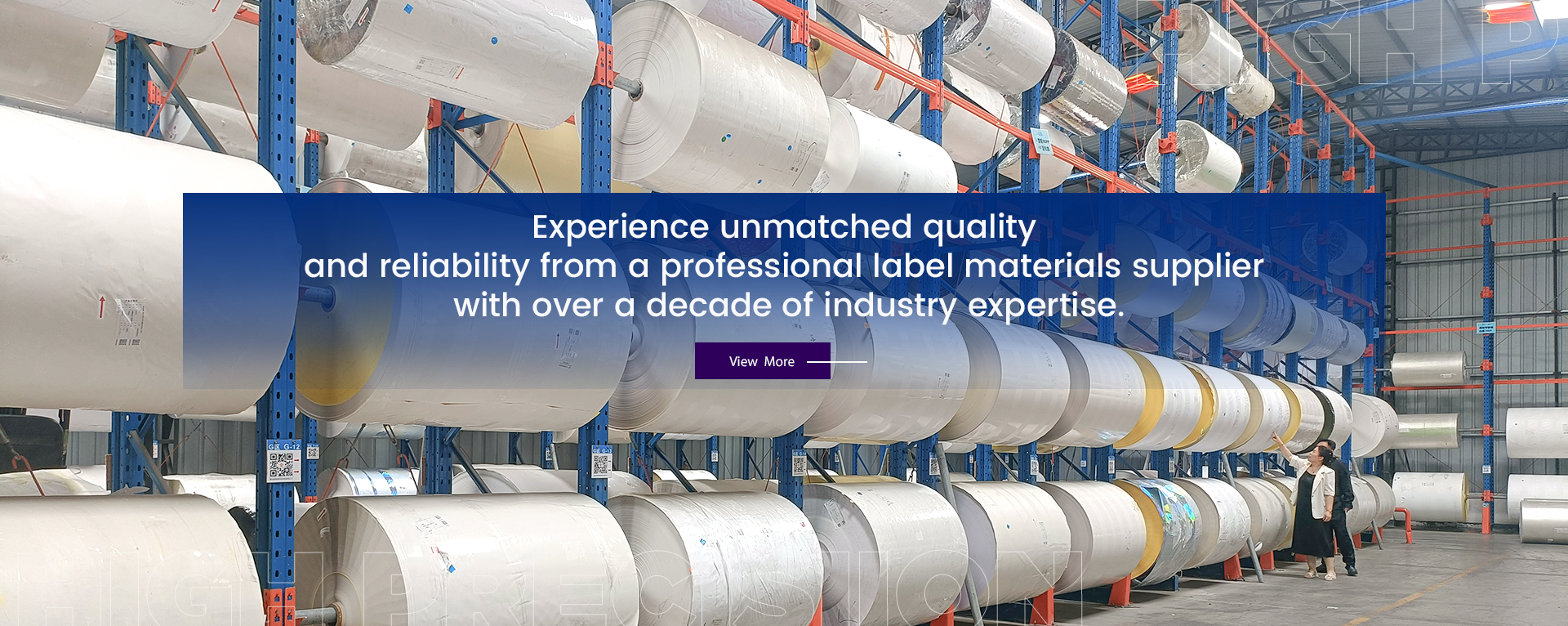Introduction
Self-adhesive labels have become an integral part of various industries as a means of conveying important information about a product, enhancing its visual appeal and providing brand recognition. With the advancement of technology and changes in consumer preferences, the demand for self-adhesive labels has continued to rise in recent years. These labels are used in industries such as food and beverage, pharmaceutical, personal care and retail, making them an important part of product packaging and marketing strategies.
The global self-adhesive labels market has been experiencing significant growth, driven by factors such as increasing urbanization, rising disposable income, and growing emphasis on product safety and authenticity. According to research and market analysis, the self-adhesive labels market is expected to continue its upward trend in the coming years, with demand in emerging economies also expected to increase significantly.
One of the key drivers for the growth of this market is the need for efficient and cost-effective labeling solutions. Self-adhesive labels are designed to be flexible, easy to use, and able to withstand a variety of environmental conditions, making them the first choice for manufacturers and brand owners. In addition, the rise of e-commerce and the growing demand for packaging and branded products have further contributed to the expansion of the self-adhesive labels market.
As the self-adhesive labels market continues to evolve, it becomes crucial for industry players to stay aware of the latest trends and forecasts. In-depth analysis of market dynamics, including factors such as technological advancements, regulatory requirements and consumer behavior, is critical for stakeholders to make informed decisions and capitalize on emerging opportunities.

Market overview
- Definition and Classification
Self-adhesive labels, also known as pressure-sensitive labels, are labels that adhere to a surface when pressure is applied. These labels are often used for branding, product information and packaging identification. They come in many types, such as paper labels, film labels, and specialty labels, each with their own unique features and applications.
- The basic composition and classification of self-adhesive labels
Self-adhesive labels consist of three main layers: facestock, adhesive, and release paper. The facestock is the material the label is printed on, and the adhesive layer allows the label to adhere to the surface. The release liner acts as a carrier for the label before it is applied. These labels are classified based on their face material, adhesive type, and application method.
- Application fields of different types of self-adhesive labels
Self-adhesive labels are widely used in various industries including food and beverage, pharmaceuticals, cosmetics and consumer goods. Paper labels are often used for packaging and branding, while film labels are more suitable for products that need to be moisture-resistant or durable. Specialty labels such as holographic labels and security labels are used for anti-counterfeiting measures and brand protection.
- Historical market performance
The self-adhesive labels market has shown steady growth over the years owing to the growing demand for packaged goods and the need for efficient labeling solutions. As printing and labeling technology advances, the market is witnessing a shift towards digital printing and customization, enabling shorter print runs and faster turnaround times.
- Growth trends of the self-adhesive label market over the past few years
In recent years, the self-adhesive label market has seen a surge in demand for sustainable and environmentally friendly labeling solutions. As consumers become increasingly aware of the environmental impact of packaging, there is a growing preference for labels made from recyclable or biodegradable materials. This trend promotes the development of innovative label materials and adhesive solutions that are sustainable and effective.
- Major market (region/industry) historical data analysis
The self-adhesive labels market is influenced by regional and industry-specific trends. In developed regions such as North America and Europe, stringent labeling regulations and the need for high-quality, aesthetically pleasing labels drive the market. In emerging markets such as Asia Pacific and Latin America, rapid expansion in the retail and e-commerce sectors is driving market development and creating opportunities for label manufacturers and suppliers.
- Global self-adhesive label market trends and forecasts
Looking ahead, the self-adhesive label market will continue to grow, driven by the increasing popularity of packaged goods and the need for efficient labeling solutions. The market is expected to witness a shift towards sustainable labeling and smart labeling technologies, as well as integration of RFID and NFC technologies for enhanced traceability and product authentication.
Additionally, the growing e-commerce industry is expected to drive demand for integrated labeling and packaging solutions as companies seek to streamline supply chain operations and enhance customer experience. This trend will create opportunities for label manufacturers and suppliers to develop innovative labeling solutions that meet the specific needs of e-commerce companies and their customers.

Key factors driving market growth
The global self-adhesive labels market is experiencing significant growth driven by various key factors. Technological innovation, the application of new materials and technologies, the impact of digital printing, changes in industry needs, and the growing demand for self-adhesive labels in the packaging industry are all contributing to the expansion of the market. Additionally, expanding applications in the medical, logistics, and retail industries and changing consumer behavior and expectations are also impacting the market’s growth trajectory.
One of the key factors driving market growth is technological innovation. Manufacturers are constantly exploring new materials and technologies to improve self-adhesive label production capabilities. These advancements have improved label durability, adhesion and print quality, making self-adhesive labels the first choice for a variety of applications.
The impact of digital printing technology is also an important driver of market growth. Digital printing enables faster turnaround times, customization and cost-effective low-volume printing, making it an attractive proposition for label producers and end-users. This technology has revolutionized the label industry, allowing brand owners to create unique and eye-catching labels that stand out on the shelf.
In addition, changes in industry demand are affecting the self-adhesive labels market. As consumer preferences and purchasing behaviors change, there is an increasing need for labels that reflect sustainability and environmental considerations. This is driving demand for environmentally friendly label materials and designs to accommodate the growing focus on sustainability in packaging.
Growing demand for self-adhesive labels in the packaging industry is another important driver. As e-commerce increases in popularity and the convenience food industry continues to grow, there is a surge in demand for high-quality, visually appealing labels that provide product information and branding. This has led to increased adoption of self-adhesive labels in various packaging applications, further driving market growth.
Furthermore, application expansion in the medical, logistics, and retail industries also contributes to the rise of the market. In the medical field, self-adhesive labels play a key role in tracking and identifying pharmaceuticals, medical devices, and patient records. In the logistics industry, these tags are critical for inventory management, tracking and supply chain optimization. In the retail industry, self-adhesive labels are used for branding, pricing and promotional purposes, further driving market demand.
Consumer behavior and expectations also play a key role in shaping the self-adhesive labels market. New consumer expectations for packaging design and sustainability are prompting brand owners to invest in label design that resonates with environmentally conscious consumers. This has led to an increasing focus on recyclable, biodegradable and environmentally friendly label materials.
The impact of customization and personalization trends is further driving market growth. Brand owners are increasingly turning to personalized labels to engage with consumers and create unique brand experiences. Personalized tags allow brands to create a more intimate connection with their target audience, ultimately increasing brand loyalty and repeat purchases.

Market challenges
Global trends and forecasts for the self-adhesive labels market indicate a steady increase in demand for these products, driven by factors such as rising consumer demand for convenience and sustainability in packaging. However, along with this growth, many challenges have emerged that pose significant hurdles for manufacturers in the market.
One of the major challenges faced by manufacturers in the self-adhesive label market is the cost of raw materials. Prices for materials such as paper, adhesives and substrates can fluctuate significantly, impacting manufacturers' bottom lines and profitability. Additionally, the impact of material cost fluctuations is a major concern for manufacturers as it affects their ability to compete in the market and meet customer demand.
Additionally, environmental regulations and sustainability issues pose another set of challenges for manufacturers in the self-adhesive label market. As global awareness of environmental issues continues to grow, manufacturers are facing increasing pressure to comply with strict regulations and implement sustainable production methods. This includes environmental regulatory challenges in material selection and waste disposal, as well as the challenge of using recycled materials in production.
Faced with these challenges, manufacturers also face technical and production challenges that can affect the quality and performance of self-adhesive labels. The production challenges of high-performance self-adhesive labels and compatibility issues with new packaging materials are key areas of concern for manufacturers looking to stay ahead of the market.
Given these challenges, it is clear that the self-adhesive label market is a complex and rapidly changing industry. To succeed in this market, manufacturers must proactively address these challenges and adapt to the changing environment. This includes implementing sustainable production methods and using recycled materials, as well as investing in research and development to address technical and production challenges.
Despite these challenges, the future of the self-adhesive labels market remains promising, with global trends and forecasts indicating continued growth in demand for these products. By staying ahead of market challenges and embracing innovation, manufacturers in the self-adhesive labels market can set themselves up for success in the years to come.
Taken together, the global trends and forecasts for the self-adhesive labels market paint a picture of a dynamic and evolving industry. While market challenges such as raw material costs, environmental regulations, and technical and production challenges present significant obstacles to manufacturers, they also provide opportunities for innovation and growth. By addressing these challenges head-on and adopting sustainable and innovative practices, manufacturers in the self-adhesive label market can position themselves for future success.
Regional market analysis
Self-adhesive labels are becoming increasingly popular in the packaging and labeling industry due to their ease of use and versatility. The global self-adhesive labels market is expected to witness significant growth over the next few years, driven by factors such as increasing demand for packaged goods, technological advancements, and growing awareness about sustainable packaging solutions.
North America: Market size, key trends and leading players
North America is an important market for self-adhesive labels, with the United States leading in terms of market size and innovation. The self-adhesive labels market in this region is driven by the growing demand for packaged food and beverages, pharmaceuticals, and consumer goods. According to a recent report by Research and Markets, the North American self-adhesive label market is expected to be worth US$13.81 billion by 2025.
Key trends in the North American market include the increasing adoption of digital printing technology, which offers greater flexibility and customization options for labels. Leading companies in the region include 3M Company, Avery Dennison Co. and CCL Industries Inc., which are focusing on product innovation and expanding their product portfolios to meet the diverse labeling needs of different industries.
Europe: The role of innovation and sustainability in markets
Europe is at the forefront of promoting sustainable and environmentally friendly packaging solutions, and the self-adhesive label market is no exception. Demand for eco-friendly labels made from recycled materials and bio-based adhesives has surged in the region. According to a report by Smithers, the European self-adhesive labels market is expected to grow at a CAGR of 4.4% from 2020 to 2025, driven by the increasing focus on sustainability and adoption of innovative labeling solutions.
Innovative technologies such as smart tags, which incorporate RFID and NFC technologies for tracking and authentication, are becoming increasingly popular in the European market. Leading companies in the region such as UPM-Kymmene Oyj, Constantia Flexibles Group and Mondi plc are investing in research and development to provide customers with sustainable and innovative labeling solutions.
Asia Pacific: Fast-growing markets and their drivers
The self-adhesive labels market in Asia Pacific is growing at a rapid pace, driven by the booming e-commerce industry, urbanization and changing consumer preferences. A report by Grand View Research shows that the self-adhesive label market in Asia-Pacific is expected to grow at a compound annual growth rate of 5.5% from 2021 to 2028, driven by growing demand for packaged food, beverages and personal care products in countries such as China and India. and Japan.
The regional market is characterized by the increasing adoption of pressure-sensitive labels, which are easy to use and offer high-quality graphics. Leading companies in the Asia-Pacific market, including Fuji Seal International, Inc., Huhtamäki Oyj, and Donglai Industry are working to expand their production capabilities and geographical distribution to capture the growing market opportunities in the region.
Other regions: Latin America, the Middle East and Africa market potential
Latin America, the Middle East and Africa are emerging markets for self-adhesive labels and present huge growth potential in the coming years. Growing urban population, rising disposable income, and rising investments in infrastructure and retail sectors are driving demand for packaged products in these regions.
In Latin America, countries such as Brazil, Mexico and Argentina have seen a surge in demand for self-adhesive labels, particularly in the food and beverage and pharmaceutical industries. In the Middle East and Africa, the growing FMCG industry and increasing focus on product differentiation and branding are driving the self-adhesive labels market.
Despite the potential for growth, these regions also face challenges, such as a lack of awareness of labeling technologies and the dominance of traditional labeling methods. However, leading players in the region, such as Coveris Holdings SA, MCC Label and Henkel AG & Co. KGaA, are actively investing in expanding their presence and educating the market on the benefits of self-adhesive labels.
In summary, the global self-adhesive labels market is expected to grow significantly, driven by growing demand for packaged goods and adoption of innovative and sustainable labeling solutions. While North America leads in terms of market size and innovation, Europe emphasizes sustainability, while Asia-Pacific offers opportunities for rapid growth. The self-adhesive label market in emerging markets such as Latin America, the Middle East, and Africa also contains huge potential. As the industry continues to evolve, players must stay abreast of regional market dynamics and adjust strategies to take advantage of the diverse opportunities offered by different regions.

Future trends and market forecasts
Self-adhesive labels have become a ubiquitous part of our daily lives. From product packaging to shipping labels, self-adhesive labels are an important part of modern business and consumer lifestyles. As technology continues to advance, the self-adhesive label industry is poised to experience significant growth and innovation in the coming years.
Technology development trends
The self-adhesive label industry continues to evolve, and technological advancement is the driving force for its growth. A major trend in technological development is the continuous improvement of label materials and adhesives. Manufacturers are investing in research and development to create more durable, sustainable and versatile labels.
Additionally, digital printing technology is revolutionizing the self-adhesive label industry. Digital printing offers greater flexibility and customization, allowing for shorter print cycles and faster turnaround times. The technology also enables variable data printing, enabling unique coding, serialization and personalization on labels.
Forecasting technological innovation
Looking ahead, we can expect to see further technological innovation in the self-adhesive label industry. One potential area of development is the integration of smart technology into labels. Smart tags equipped with RFID or NFC technology can provide real-time tracking and authentication, providing huge value to supply chain management and anti-counterfeiting efforts.
Additionally, advances in printable electronics may lead to the development of interactive labels with features such as temperature monitoring, humidity detection, and even electronic displays. These innovations have the potential to change the way we interact with labels, opening up new possibilities for product information and engagement.
Market growth forecast
The future of the self-adhesive label industry looks promising, with the market poised to experience significant growth. Quantitative forecasts predict steady growth over the next five to ten years, driven by growing demand for packaged goods, e-commerce and personalized products.
As the global economy continues to recover, the self-adhesive label market is expected to grow in tandem with industries such as food and beverage, pharmaceuticals, and logistics. The rise of online shopping and direct-to-consumer brands has also fueled demand for customized and eye-catching labels to differentiate products in a crowded marketplace.
Potential growth areas
In addition to the continued growth of traditional markets, the self-adhesive label industry is also ready to explore new application areas and market opportunities. One potential area of growth lies in the expanding cannabis industry, where regulations and labeling requirements are becoming increasingly complex. This provides label manufacturers with an opportunity to develop specialized solutions tailored to cannabis packaging and compliance needs.
Additionally, the growing focus on sustainability and eco-friendly packaging is driving demand for recyclable and biodegradable labels. Manufacturers are exploring innovative materials and adhesives that meet these sustainability requirements without compromising performance or aesthetics.
As e-commerce continues to reshape the retail landscape, demand for durable and attractive shipping labels is expected to surge. As label materials, adhesives and printing technologies advance, labels will play a vital role in enhancing consumers' unboxing experience and improving enterprises' logistics efficiency.
In summary, the self-adhesive label industry is on the cusp of exciting technological developments and market expansion. With a focus on innovation, sustainability and meeting changing consumer demands, the future of self-adhesive labels will continue to grow and transform. As businesses and consumers seek more sophisticated labeling solutions, the industry will adapt, driving new applications and opportunities in the coming years.

Strategic advice
In the evolving self-adhesive labels market landscape, strategic advice plays a vital role in guiding manufacturers and supply chain players to achieve success. As markets continue to expand and diversify, companies must stay ahead of the curve and make strategic decisions that drive growth and profitability. For a company like China Donglai Industrial that focuses on impressing its customers, strategic advice becomes even more important to achieve the company's strategy and ensure long-term success.
When it comes to label materials, strategic advice covers a wide range of considerations, from production and supply chain management to investment and market analysis. With more than three decades of experience in the production, research, development and sales of self-adhesive materials and finished labels, China Donglai Industries has accumulated valuable insights that can benefit producers and investors in the label market.
One of the key aspects of label materials industry strategy advice is corporate strategy. A company must have a clear understanding of its goals, target markets, and competitive positioning. As the demand for sustainable and innovative label materials continues to grow, companies must adapt their corporate strategies to market trends and consumer preferences. China Donglai Industrial has successfully integrated its corporate strategy with the changing dynamics of the label materials market, positioning itself as a leader in providing environmentally friendly, high-quality label materials.
Strategic advice also extends to producers and supply chain players in the label materials industry. With the increasing complexity of supply chains and the need for efficiency and cost-effectiveness, companies need guidance on optimizing production processes, sourcing raw materials and managing logistics. China Donglai Industries has been committed to providing strategic advice to manufacturers and supply chain participants, leveraging their expertise to streamline operations and improve overall productivity.
Investment advice is another important component of strategic advice for the Label Materials market. As the industry continues to attract investment from domestic and foreign players, it is important for investors to have a comprehensive understanding of market dynamics and potential opportunities. China Donglai Industrial has been actively involved in providing investors with in-depth analysis of investment opportunities in the self-adhesive label market, helping them make informed decisions and maximize investment returns.
In addition to investment recommendations, strategic recommendations include a thorough analysis of investment opportunities in the Label Materials market. This includes assessing market trends, competitive landscape, technological advancements and regulatory environment. China Donglai Industrial has a dedicated team dedicated to providing investors with in-depth analysis of the label materials market, enabling them to identify potential growth areas and make strategic investments.
With a strong focus on impressing its customers, China Donglai Industrial continues to refine its strategic proposals to adapt to the changing needs and preferences of the label material market. By providing comprehensive guidance on corporate strategy, production and supply chain management, investment advice and investor analysis, the company positions itself as a trusted partner to companies and investors seeking to succeed in the label materials industry.
As the label materials market continues to evolve, strategic advice will continue to be a driver of success for companies and investors. With the expertise and insights gained over the years, China Donglai Industrial is well-positioned to continue to provide valuable strategic advice and contribute to the growth and sustainable development of the label materials industry.

Conclusion
The self-adhesive labels market is experiencing significant growth and is expected to continue expanding in the coming years. The demand for self-adhesive labels is driven by a number of global trends and forecasts, including the increasing popularity of consumer packaged goods, growth in the e-commerce industry, and growing demand for sustainable and eco-friendly labeling solutions.
One of the major global trends driving the growth of the self-adhesive labels market is the increasing consumption of consumer packaged goods. As the global population continues to grow and urbanize, demand for packaged food, beverages and personal care products continues to increase. Self-adhesive labels play a vital role in providing product information, branding and shelf appeal, making them vital to manufacturers and retailers in the consumer goods industry.
Another major factor driving the growth of the self-adhesive labels market is the rapid expansion of the e-commerce industry. With the convenience of online shopping, more and more consumers are turning to e-commerce platforms to purchase various products. As a result, there is a growing demand for shipping labels, barcodes and other labeling solutions to ensure efficient and accurate product delivery.
Additionally, the growing focus on sustainability and environmental awareness is driving the demand for eco-friendly labeling solutions. Self-adhesive labels made from recyclable materials and using environmentally friendly adhesives are increasingly popular with consumers and businesses. As a result, manufacturers are investing in innovative and sustainable labeling technologies to meet the growing demand for environmentally friendly labeling solutions.
Looking ahead, the self-adhesive label market is expected to continue its upward trend, with analysts predicting steady growth in the coming years. As the global economy continues to recover from the impact of the COVID-19 pandemic, demand for self-adhesive labels is expected to remain strong, driven by the global trends and forecasts mentioned above.
In summary, the self-adhesive labels market is well-positioned for growth, supported by growing demand for consumer packaged goods, expansion of e-commerce, and growing emphasis on sustainability. As the market continues to evolve, manufacturers and businesses will need to adapt to these global trends and forecasts to remain competitive and meet the growing demand for innovative labeling solutions.

Contact us now!
Over the past three decades, Donglai has achieved remarkable progress and emerged as a leader in the industry. The company's extensive product portfolio comprises four series of self-adhesive label materials and daily adhesive products, encompassing more than 200 diverse varieties.
With an annual production and sales volume exceeding 80,000 tons, the company has consistently demonstrated its capability to meet the market demands on a large scale.
Feel free to contact us anytime! We're here to help and would love to hear from you.
Adress: 101, No.6, Limin Street, Dalong Village, Shiji Town, Panyu District, Guangzhou
Phone: +8613600322525
mail: cherry2525@vip.163.com
Sales Executive
Post time: Mar-18-2024


